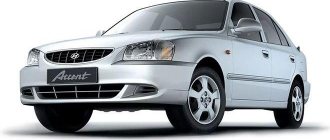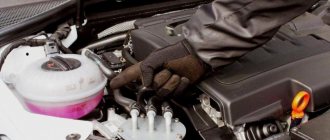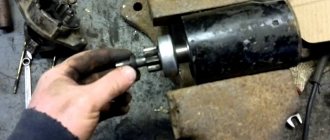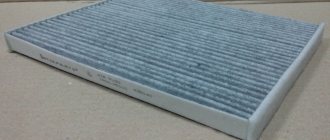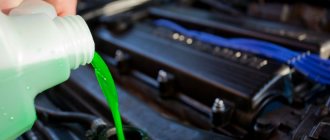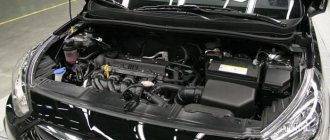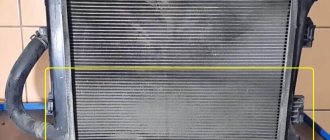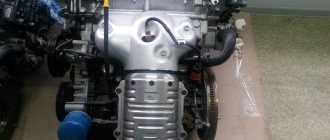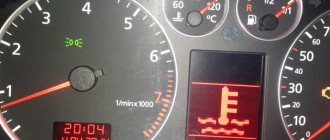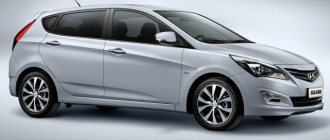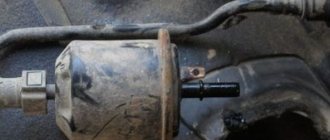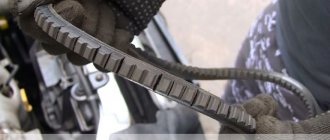The correct operation of the car is due to the fact that all power units and components are working properly. So, the presence of coolant and the correct amount of it is the key to the normal performance of the Hyundai Accent engine. But, like any liquid in a car, antifreeze needs to be replaced, and in the case of an accent, this needs to be done every 80,000. In this article we will look at how to change antifreeze with your own hands, and also tell you about some of the subtleties and nuances of the process itself.
Video material
The video will help us understand how to replace antifreeze on an Accent, help us find out which antifreeze is best to fill, as well as recommendations from factory standards.
How to change the fluid
Antifreeze
is a special fluid necessary to cool engine parts, thereby protecting them from excessive heat. Its presence in the car is necessary in the same way as the presence of brake fluid, since without it the cooling system and the car as a whole will not function.
You can change it either on your own or seek help from specialists at a car service center. If you have certain skills in working with mechanics, then performing all the procedures yourself will not be so difficult
.
Nuances
It is recommended to change the coolant every 4 years or upon reaching 45 thousand km. It all depends on what comes first. Give preference only to high-quality antifreeze so that you do not end up having to send the entire car for repairs.
To replace antifreeze in a Hyundai Accent, you need to know some details. This machine model is designed so that the process of changing the coolant is slightly different from the standard procedure
. But there is nothing scary or very difficult about this.
- Make sure that the car is on a flat, horizontal surface.
- Antifreeze is poured directly through the radiator, due to the fact that there is no drain plug on the tank. This is the difficulty mentioned above.
- First, we drain the old composition from the system. To do this, use containers of the required volume. If necessary, clean the system and filters.
- Having completed everything written above, you can begin to fill in new antifreeze. It is a mixture of coolant and distilled water. The proportions depend on the car itself, the temperature outside and, accordingly, the time of year.
- The oil product is filled to the required level, and after that the tank and radiator are closed.
After replacing the coolant in a Hyundai Accent, you need to turn on the engine and let it idle.
This is necessary to ensure that the composition is evenly distributed throughout the system.
All about replacing refrigerant
Before proceeding directly to the process of replacing antifreeze on a Hyundai Accent, you need to understand that the volume on each Accent engine is different, so you need to prepare a container measuring from 7 to 10 liters. We purchase the antifreeze itself and begin the replacement process.
- The first step is to drain the antifreeze.
Safety precautions
As you can see, replacing Hyundai Accent antifreeze is not a complicated procedure at all, but it does have its own nuances. When changing petroleum products, be sure to follow all safety rules
.
- The liquid is very toxic, so you only need to work with gloves. If it gets on your skin or eyes, rinse them immediately with plenty of clean water.
- The radiator must be completely cool to prevent burns to the driver.
- The entire system is under pressure, so you need to be extremely careful and careful.
Hyundai Solaris
Use ethylene glycol based coolants (antifreeze).
Replace coolant only when the engine is cold.
Coolant is toxic, so be careful when handling it.
When starting the engine, the radiator and expansion tank caps must be closed. Screw the radiator cap tightly. The cooling system is under pressure when the engine is running, so coolant may leak from under a loosely tightened plug.
Cooling system Hyundai Accent
Hyundai Accent 2005, 2007 and 2008 produced by TagAZ uses cooling systems that include:
- Expansion tank. Coolant enters the system through this container.
- The lines through which the refrigerant circulates.
- A thermostat designed to turn on a large and small circle of circulation of consumables.
- Radiator cooling device for the power unit.
- A fan designed to prevent overheating of a car engine.
If one of the system components, be it a radiator or a ventilation device, fails, cooling the Hyundai Accent internal combustion engine will be impossible.
What refrigerant do I use at the factory?
According to the instruction manual, when assembling Korean cars, red coolant is poured into the cooling system. Depending on the year of manufacture and modification of the car, refrigerant manufacturers may be different. Often, Ravenol, Cool Stream Premium or Castrol liquids are poured into Accents.
Special product for flushing the cooling system
How to fill antifreeze into a Hyundai Accent?
Antifreeze for Hyundai Accent cars has the same article number, manufacturer and the same composition. From the factory, these vehicles are filled with green coolant, made on the basis of ethylene glycol. It has the specifications of Hyundai-Kia MS 591–08, Korean KSM 2142 and Japan JIS K 2234.
How many liters of antifreeze in Hyundai Accent 2008?
How many liters of antifreeze in a Hyundai Accent?
How much antifreeze is in the cooling system, volume table
| Model | Engine capacity | How many liters of antifreeze are in the system |
| Hyundai Accent Tagaz | gasoline 1.5 | 6.3 |
| gasoline 1.4 | 6.0 | |
| gasoline 1.3 | 6.0 | |
| diesel 1.5 | 5.5 |
How to remove air from the accent cooling system?
Close the coolant expansion tank cap. Allow the engine to warm up at 2500 rpm until the radiator fan turns on. Remove air from the cooling system. Run the engine for approximately 2 minutes at 2000–2500 rpm.
Where is the Hyundai Accent expansion tank located?
The expansion tank is installed in the engine compartment on the right mudguard.
What kind of coolant should I fill in Solaris?
From the assembly line in Korea, Solaris is filled with Hyundai Long Life Coolant with Korean specification MS-591-08. Russian-assembled cars can be filled with CoolStream A-110 or Crown LLC A-110 antifreeze (catalog number R9000AC001K).
How to drain antifreeze from an accent block?
The process itself is quite simple, but it takes 3-4 hours.
- remove the expansion tank (with 2 bolts), pour out the antifreeze and clean/wash it, put it in place.
- Some instructions also recommend draining the coolant from the pipes. ...
- drain the antifreeze from the radiator. ...
- pour dist through the upper neck of the radiator.
How to drain antifreeze from a Hyundai Matrix block?
There are two ways to drain fluid from the radiator in the Hyundai Matrix: through the drain valve of the lower tank, or by disconnecting the lower pipe. A rubber hose is placed on the drainage spout, which should lead to a container for drainage. You will also need to drain antifreeze into the Hyundai Matrix from the cylinder block.
What kind of antifreeze is poured into the Hyundai I40 from the factory?
For example: For Hyundai I40 (Vf) 2011, with a gasoline or diesel engine type, it is suitable - Carboxylate antifreeze class, type G12 with shades of red. The approximate period of the next replacement will be 5 years.
What color is the antifreeze in the accent?
Antifreeze for Hyundai (Accent, Sonata, Elantra, Solaris, Tussan, Creta) and KIA (Sid, Sportage, Spectra, Rio) cars has the same article number, manufacturer and the same composition. From the factory, these vehicles are filled with green coolant, made on the basis of ethylene glycol.
How to add coolant to Solaris?
First set the coolant level in the expansion tank. There are marks F and L on it, the level should be between them. If you need to top it up, remove the reservoir cap along with the hose. Pull up the filling tube and turn the tube counterclockwise to fix it.
Replacement intervals
In accordance with technical regulations, the procedure for changing consumables in Accents must be performed every 40 thousand kilometers. But you need to take into account that the interval can be higher or lower. Much depends on the quality of the refrigerant used and the performance of the refrigeration system.
How to determine the need for urgent refrigerant replacement?
What “symptoms” can be used to determine the immediate need to change consumables:
- The appearance of sediment in the system. Deposits most often appear at the bottom of the fluid reservoir in the engine compartment; they also collect in pipes and lines, but it is impossible to visually determine their presence without dismantling the hoses. The presence of sediment is especially obvious at low negative air temperatures.
- Increase in the freezing point of the refrigerant. If the liquid began to crystallize earlier, at higher temperatures, this indicates that it cannot cope with the functions assigned to it. For diagnostics, you can check the density of the consumable material. The test is performed using a hydrometer.
- The appearance of a yellow coating on the expansion tank plug. This also indicates that the freezing point of the refrigerant has increased.
- The consumable material has darkened and acquired a brown tint. This indicates that there are traces of rust and corrosion in the cooling system. If this is so, then the additives that are included in the consumables have lost their operational features. They can no longer form a protective film on the internal components of the cooling system.
- Refrigerant foaming. Antifreeze contains antifoam additives designed to prevent the formation of foam in the system. Its appearance indicates the need for replacement.
- Inefficient operation of the stove. If the heater is working poorly, this is especially obvious in the cold season, you need to check the functionality of the cooling system. Perhaps the reason is pipes clogged with deposits or poor antifreeze.
Replacement frequency, what antifreeze to fill
Based on the operating instructions, as well as the manufacturer’s recommendations, replacing antifreeze on a Hyundai Accent Tagaz must be carried out once every 40,000 km. After this period, basic functions deteriorate sharply. Protective and anti-corrosion additives stop working.
Car enthusiasts use coolant standards G12 or G11 for replacement, guided by their knowledge, as well as the advice of friends. But the manufacturer recommends using original antifreeze for Hyundai Accent.
In Russia you can find Hyundai Long Life Coolant and Crown LLC A-110 for sale. They are both original antifreezes that can be used in cars of this brand. The first is produced in Korea, and the second has a country of origin of the Russian Federation.
There are also analogues, for example CoolStream A-110 from the description, which you can find out that it is poured from the factory into cars of this brand. Another analogue of RAVENOL HJC Hybrid Japanese Coolant, which also meets the tolerances.
Replacement of the cooling system for other Hyundai categories
In cars of other Hyundai categories, the method of replacing coolant is practically the same. To change antifreeze on a Hyundai Solaris or Hyundai Getz, you can follow the above recommendations; the procedure is carried out according to the same algorithm. On Hyundai Verna, replacing antifreeze is also similar to the procedure described.
Car enthusiasts who are interested in replacing Accent Drive2 antifreeze can follow the algorithm proposed above, however, minor differences are still present. The differences between Accent Drive2 and other Hyundai models are in the location of the tank, radiator and drain holes.
To maintain normal engine temperature conditions on a Hyundai Accent, also known as TagAZ, it is necessary to periodically change the coolant. This simple operation can be easily done with your own hands if you strictly follow the instructions and perform the necessary actions.
Consequences of untimely replacement
Briefly about the consequences that are fraught for the car in case of untimely replacement of the refrigerant.
Antifreeze replacement on Hyundai Accent cars is carried out at intervals - once every 40,000 km, and based on the operating time - once every 2 years. It all depends on which date comes first. Also, the coolant should be replaced if a reddish-black tint appears. The work can be done at a service station or in your garage. We'll look at how to do it yourself below.
What antifreeze should I put in a Hyundai Accent?
When choosing a coolant, pay attention to the manufacturer's recommendations. In addition, practice has shown the relevance of using the following antifreezes:
- From 1998 to 2002 - red G12 antifreeze. Examples - MOTUL Ultra, G-Energy, GlasElf, Motorcraft, Freecor.
- From 2003 to 2009 - coolant class G12+ red. Options - MOTUL Ultra, Lukoil Ultra, Chevron, Freecor, AWM.
- From 2010 to 2014 - red antifreeze class G12++. The optimal products for the Hyundai Accent this year are Castrol Radicool Si, FEBI, VAG, Frostschutzmittel A.
When is it necessary to replace antifreeze on a Hyundai Accent?
Owners of cars of this brand should know that according to technical regulations, antifreeze on the Accent is replaced after every 40,000 km. But you shouldn’t completely rely on the regulations, since the interval is affected by the quality of the refrigerant and the performance of the car’s cooling system. If signs appear indicating the need to replace the coolant, the appropriate procedure must be carried out, even if 40,000 km have not yet been completed.
The main signs of the need to change antifreeze:
- sediment appears in the system, it can be seen in the engine compartment, pipes and lines;
- the freezing point of the refrigerant increases;
- a yellow coating forms on the expansion tank cap;
- the liquid in the cooling system has changed color to a darker color;
- the coolant begins to foam;
- car heater reduces efficiency.
Many car owners simply change antifreeze once a year, without tracking mileage, in order to avoid costly car repairs due to insufficient cooling.
Checking the coolant level of a Hyundai Accent
The expansion tank is installed in the engine compartment on the right mudguard. To check the fluid level, place the car on a flat horizontal platform. The fluid level in the expansion tank should be checked on a cold engine.
There are marks “F” and “L” on the tank, between which the fluid level should be on a cold engine. When the engine is warmed up to operating temperature, the coolant level in the reservoir may be slightly above the “F” mark. If the level is at the “L” mark or below, add fluid recommended by the manufacturer to the tank. After opening the radiator cap of a Hyundai Accent, check the fluid level and top up if necessary. If you need to add fluid to the system while the engine is warm, you must stop the engine. Lift the cap of the expansion tank by the tongue and remove it from the neck of the tank.
Add coolant to the tank, slightly below the “F” mark. Warning:
Coolant is poisonous.
Coolant that gets on engine parts or paintwork must be removed with a rag. Then close the expansion tank with a lid. Attention: If the fluid level in the reservoir is constantly decreasing, then there is most likely a leak in the system. In this case, it is necessary to check the tightness of the cooling system and eliminate the malfunction (see “Cooling system”).
The process of replacing antifreeze on a Hyundai with your own hands
Let's take a closer look at the procedure: Hyundai Accent Tagaz - replacing antifreeze yourself. It is important to remember safety precautions, as the coolant is poisonous and care should be taken not to get it on the skin or in the eyes. If refrigerant gets on your skin, rinse the area thoroughly; if it gets into your eyes, you should immediately call an ambulance and go to the hospital.
When draining antifreeze from the tank, unforeseen problems may arise, such as a large amount of refrigerant getting into the engine; when filling in new liquid, it may spill past, this should be taken into account in advance.
Preparation and necessary tools
Before draining the antifreeze from the Hyundai Accent unit, the car owner needs to prepare a garage with a pit or overpass, as well as a set of necessary tools and consumables:
- good quality refrigerant suitable for use in cars of this brand;
- about 20 liters of distilled water;
- container for collecting drained liquid;
- pliers;
- clean rags or rags.
It should be remembered that the engine must cool thoroughly before replacing the coolant. In a hot engine, antifreeze is under slight pressure, and you can get burned when removing the radiator cap.
Replacing antifreeze on an Accent: step-by-step instructions
At the first stage, it is necessary to drain the used antifreeze from the system. The procedure consists of several steps:
- drive the car into a pit or overpass;
- place a prepared container under the radiator for draining;
- unscrew the expansion tank cap;
- unscrew the radiator filler plug;
- Unscrew the drain cap and drain the waste liquid;
- when the old refrigerant has completely drained, carefully wipe away any spills with a clean cloth or rag;
- tighten the drain plug.
The next step is flushing the cooling system. It is also carried out in several successive steps:
When do you need to change antifreeze on a Hyundai?
According to manufacturers' recommendations, most Hyundais (Accent, Sonata, Elantra, Solaris, Tucson, Creta) and KIA (Ceed, Sportage, Spectra, Rio) need to be replaced once every 10 years, or every 120 thousand km. But many experienced drivers agree that this is too long a period, and recommend changing it at least every 2 years, or 30 thousand km. To top up, you can use distilled water or ready-made diluted antifreeze (not concentrate). Water is usually added when the car is used intensively in the hot season.
Antifreeze in Hyundai: what is filled from the manufacturer
In all configurations of the above-mentioned cars, the same antifreeze is always poured - green (do not confuse it with G11). There are slight differences only depending on the country of manufacture of the car.
Choice of antifreeze.
For cars manufactured in Russia, antifreeze is produced by order of Mobis Parts CIS LLC. The article number for this liquid is R9000AC001Н. This is a white liter bottle with the Hyundai or Kia emblem and the inscription Crown LLC A-110 antifreeze belongs to the phosphate-carboxylate class. Manufactured using the technologies of the Korean company Kukdong. This liquid contains, in addition to ethylene glycol, demineralized water and a special concentrate AC-110. Often, this antifreeze is purchased for refilling. There is no need to pre-dilute it with distilled water.
There is also the same liquid, only under the article number R9000AC001K. According to the catalog, it is used for KIA cars (this is indicated by the last letter K in the article). Both in composition and volume, both antifreezes are completely identical. Coolants are based on ethylene glycol, since Kia, just like Hyundai, has an aluminum radiator. Both comply with Hyundai/Kia specification MS591-08 and JIS K 2234. There is only a slight difference in price.
The original coolant for Hyundai and KIA, produced outside of Russia - Hyundai/Kia Long Life Coolant (concentrate) has article number 0710000200 (2 l) or 0710000400 (4 l). Manufacturer: KUKDONG JEYEN COMPANY LTD. This antifreeze is based on phosphate ethylene glycol and contains a minimum of amines, borates, silicates and nitrites, but belongs to the silicate class. Typically, the packaging of this product indicates a shelf life of 2 years (Coolant 2yr). But at the same time, the manufacturer recommends replacing antifreeze on Hyundai once every 10 years. These disagreements are due to the fact that during long-term storage of this liquid, sediment may form at the bottom of the container.
A type of antifreeze.
Since this South Korean antifreeze is supplied as a concentrate, it must be diluted with distilled water before use. It is advisable to dilute 1 to 1. In such proportions, a lower temperature of −37 ° C is achieved, and if you take 60 parts versus 40 water, then all of −52 degrees (in warm regions where the temperature does not drop below −26 ° C, they use inverse proportion). At other ratios, the lower operating temperature also changes. As a rule, such a coolant is purchased when the coolant is completely replaced.
Which coolant is better to choose?
To effectively cool a car engine, high-quality antifreeze must be used. Antifreeze may be added to more worn engines, but domestically produced products are not recommended for use in foreign cars. Exact recommendations regarding the use of refrigerant of a particular standard are indicated in the service book; they may vary depending on the type of engine and year of manufacture of the car.
In newer ones, the automaker recommends filling in red G12 class refrigerant, developed on the basis of ethylene glycol.
Red Felix G12 refrigerant
Stages of replacing the coolant Hyundai Accent
Since there is no drain plug on the engine, it is best to replace it with a complete flush of the cooling system. This will allow you to completely flush out the old antifreeze from the system and replace it with new one.
The best option for replacement would be to have a hole or overpass for more convenient access to the drain holes. Instructions for replacing the coolant will be useful for owners of the following Hyundai models:
- Hyundai Accent Restyling;
- Hyundai Accent Tagaz;
- Hyundai Verna;
- Hyundai Excel;
- Hyundai Pony.
Popular engines are petrol with a volume of 1.5 and 1.3 liters, as well as a diesel version with a 1.5 liter engine. There are also models with other displacements, but more often they were sold in other markets.
Coolant drain
All work should be carried out when the engine has cooled to 50°C or lower, so there is time for preparatory work. It is necessary to remove the engine protection, as well as the protective plastic, which is secured with 5 10mm head bolts, as well as 2 plastic pistons.
Next we move on to the main procedure:
- We find a plastic drain plug at the bottom of the radiator and unscrew it, having previously placed a container under this place into which the old antifreeze will drain (Fig. 1). Fig.1 Drain plug on the radiator
- Open the radiator cap to speed up the draining process (Fig. 2).
Fig.2 Radiator cap and expansion tank
We remove the expansion tank for flushing and draining, since sediment often forms at its bottom. Which can sometimes only be removed mechanically, for example using a brush. Since there is no drain plug on the block head, we will drain it from the hose that goes from the thermostat to the pump. Removing the clamp with pliers is not convenient at all. Therefore, we select the correct key, unclench the clamp and tighten the pipe (Fig. 3).
Fig.3 Unclamp the clamp using a key
Flushing the cooling system
Before flushing, we check that all the pipes are in place, and that the drain valve is closed, and proceed directly to the procedure itself:
- Fill the radiator with distilled water to the top and close the lid, also fill the expansion tank halfway.
- We start the car and wait until it warms up completely, until about the second time the fan turns on. In this case, you can periodically add gas.
- We turn off the car, wait until the engine cools down, and drain the water.
- We repeat the procedure until the water after rinsing is clear.
After a well-carried out flush, the antifreeze on our Accent will fully perform its function until the next service replacement. If this procedure is not followed, the service life may be sharply reduced, since plaque and decomposed additives of the old coolant remain in the system.
Filling without air pockets
If the replacement is carried out with a complete flushing of the system, it is recommended to use a concentrate as a new fluid. Since distilled water remains in the system, in a volume of 1-1.5 liters. The concentrate must be diluted taking into account this volume.
Now we begin to pour new antifreeze into the radiator to the level of the bypass tube, as well as to the middle of the expansion tank. After this, close the covers and start the engine. We wait until it warms up completely, sometimes increasing the speed.
With this approach, no air lock should form in the system. But if it does appear and the engine overheats because of this, you need to perform the following steps. We put the car on a hill so that the front is raised up.
We start the engine, warm it up with a constant increase in speed to 2.5-3 thousand. When doing this, we look at the temperature readings; we must not allow the engine to overheat. Then we turn off the engine and open the radiator cap a little so that it does not come out of gear, but the air can escape.
Refueling tanks and brands of fuel and lubricants Hyundai Accent
| Filling/lubrication point | Refill volume | Classification | |
| Fuel tank | Before restaling | 43 liters | Gasoline no less than 92 |
| After restaling | 50 liters | ||
| Engine lubrication system (including oil filter) | Engine 1.4 liters | 3.3 liters | Oil type according to SAE 5W20 or 5W30; By API: SM According to ILSAC GF-4 |
| Engine 1.6 liters | 3.3 liters | ||
| Engine cooling system | 1.6 liters | 5.3 liters | Antifreeze safe for aluminum radiators with distilled water |
| 1.4 liters | 5.3 liters | ||
| Transmission | Manual transmission | 1.9 liters | According to API: GL-4; according to SAE: 75W85 Diamond ATF SP-III or SK ATF SP-III |
| Automatic transmission | 6.1 liters | ||
| power steering | 0.9 liters | Ultra PSF-3 03100-00100 or Ultra PSF-3 03100-00110 | |
| Brakes | 0.8 liters | DOT-3 or DOT-4 |
(
3
votes: average:
4,67
out of 5)
Loading…
Leaks and problems
Over time, your car needs to pay close attention to the pipes and hoses. They may begin to dry out and crack. What causes a leak to form, the worst thing is when it happens on the road, where you can’t get to a service center or a spare parts store.
The radiator filler cap is considered a consumable and therefore must be changed periodically. Because due to a soured bypass valve, the pressure in the system may increase, which will lead to a leak in the cooling system at a weak point.
Source
Hyundai Accent UTKa › Logbook › Replacing antifreeze on the accent
Good day to all.
2.5 years of car ownership and 45 thousand mileage have passed. It's time to change the antifreeze. I’m doing this successfully for the second time, so I decided to share my experience. Some owners actually drive for 5-6 years, but this is not our method
